Winter wheat, winter barley, winter oilseed rape and spring barley are grown on Peter Lynch’s farm, with between 250ac and 300ac planted annually. Prior to constructing his current grain store, no purpose-built storage was available, with Peter having to either cart grain directly to the mill or store it temporarily in a cattle lie-back.
In his own words, Peter started back to front, purchasing a grain dryer before having a grain store. In his first year with the dryer, wheat was harvested at 28% moisture due to poor conditions.
“If I hadn’t the grain dryer that year, there would have been a falling out with the mill because they would have refused to take it. That first year we used a lot of gas, but we got the grain dried,’’ stated Peter.
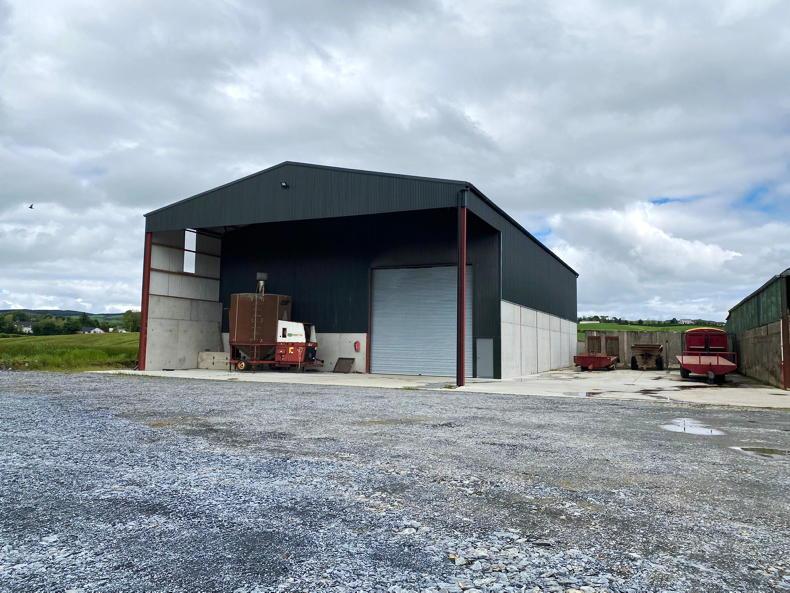
Different sized bays were installed to allow for a lean-to to be constructed with the shed on the right-hand side in the future.
It was then decided to construct a purpose-built grain store to maximise the usage of the dryer. Originally intending to build a smaller store, Peter broke ground in February 2021 and constructed a 60ft x 110ft, seven-bay grain store, with a height of 28ft to the eaves.
Open bay
There is a 20ft open bay at the front of the shed, with five 15ft bays internally, in addition to a 15ft 9in bay at the back to give six bays of storage. The reasoning for the different size bays is to allow for the construction of a lean-to between the grain store and an existing round-roof shed in the future, if required.
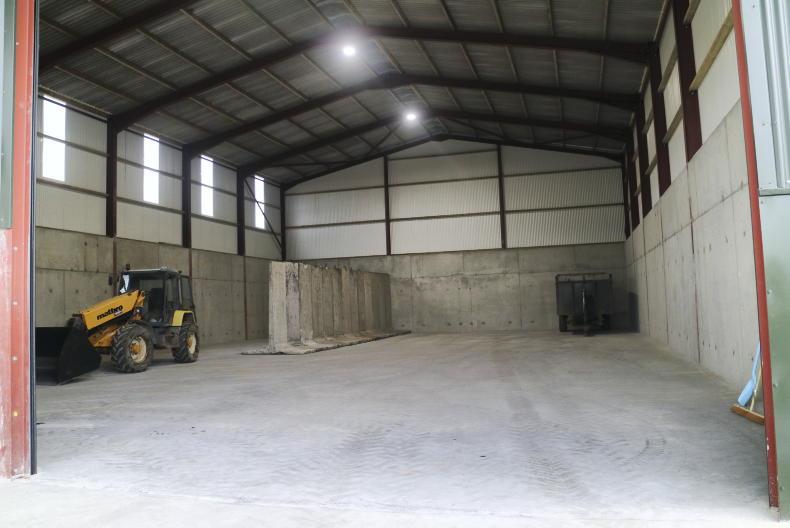
The inside of the shed is split up using movable concrete barriers to allow for different crops to be stored at the same time.
A 20ft x 20ft electronic roller door is fitted to the right-hand side of the shed face, with a pedestrian door alongside it.
Peter felt a central door left inadequate room for loading lorries and was a poor use of space, with lorries now able to back in to the shed along the wall and 50ft of room to one side for ease of loading with the telehandler.
At 20ft wide, when rolling barley Peter is able to park the tractor outside the door and out of the dust, while still being able to get in and out of the store easily.
The shed is split at harvest time using movable concrete barriers to allow for up to three crops to be stored separately.
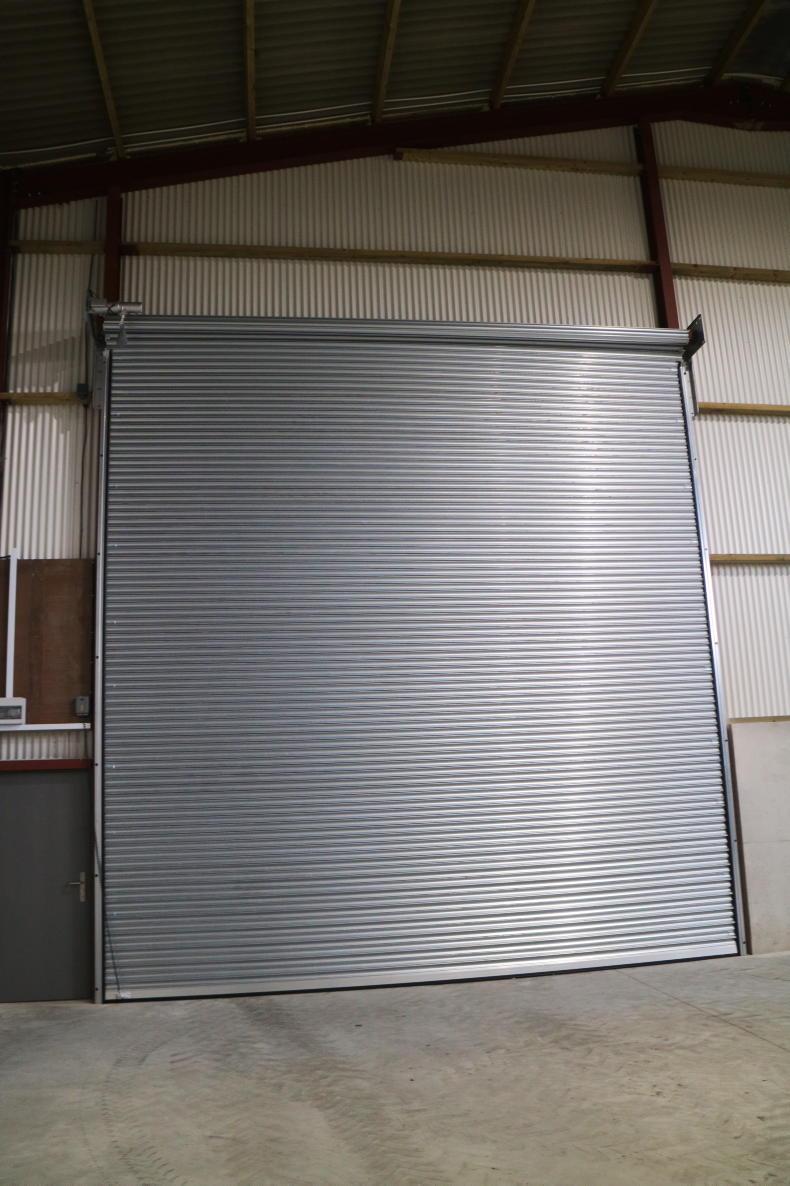
A 6m x 6m (20ft x 20ft) machinery door was fitted to one side, with a pedestrian access door adjacent.
Peter feels that 500t-600t of grain could be comfortably stored in the shed and still allow access for loading lorries using the telehandler.
Much of the work was completed by Peter himself with the aid of friends, which included site preparation, standing all steel and erecting the roof timbers.
The shed itself was supplied by Multispan, with fibre cement sheeting specified by Peter.
Thomas and Raymond Leever Construction completed all concrete works including the shuttering of walls and the floor, while also applying the cladding to the roof and sides.
Cost
Excluding the work that Peter completed himself on the store, the current cost of construction is sitting at around €100,000 excluding Vat, with a valuation of €20,000 on Peter’s own time and machinery input.
Peter did not opt to apply for TAMS aid as he felt the specification was “overkill” and unnecessary.
He estimated that to complete the project to TAMS specification would cost in the region of €140,000, which made the project much less feasible in his eyes, in addition to the extra regulations and stipulations that would be imposed on him.
As such, Peter is happy with the
cost of construction, viewing the project as a long-term investment for the farm.
The flexibility of having drying and storage facilities on-farm gives him greater options when selling grain, and when not used for grain storage, it can be utilised to store seed, fertiliser etc.
Winter wheat, winter barley, winter oilseed rape and spring barley are grown on Peter Lynch’s farm, with between 250ac and 300ac planted annually. Prior to constructing his current grain store, no purpose-built storage was available, with Peter having to either cart grain directly to the mill or store it temporarily in a cattle lie-back.
In his own words, Peter started back to front, purchasing a grain dryer before having a grain store. In his first year with the dryer, wheat was harvested at 28% moisture due to poor conditions.
“If I hadn’t the grain dryer that year, there would have been a falling out with the mill because they would have refused to take it. That first year we used a lot of gas, but we got the grain dried,’’ stated Peter.

Different sized bays were installed to allow for a lean-to to be constructed with the shed on the right-hand side in the future.
It was then decided to construct a purpose-built grain store to maximise the usage of the dryer. Originally intending to build a smaller store, Peter broke ground in February 2021 and constructed a 60ft x 110ft, seven-bay grain store, with a height of 28ft to the eaves.
Open bay
There is a 20ft open bay at the front of the shed, with five 15ft bays internally, in addition to a 15ft 9in bay at the back to give six bays of storage. The reasoning for the different size bays is to allow for the construction of a lean-to between the grain store and an existing round-roof shed in the future, if required.

The inside of the shed is split up using movable concrete barriers to allow for different crops to be stored at the same time.
A 20ft x 20ft electronic roller door is fitted to the right-hand side of the shed face, with a pedestrian door alongside it.
Peter felt a central door left inadequate room for loading lorries and was a poor use of space, with lorries now able to back in to the shed along the wall and 50ft of room to one side for ease of loading with the telehandler.
At 20ft wide, when rolling barley Peter is able to park the tractor outside the door and out of the dust, while still being able to get in and out of the store easily.
The shed is split at harvest time using movable concrete barriers to allow for up to three crops to be stored separately.

A 6m x 6m (20ft x 20ft) machinery door was fitted to one side, with a pedestrian access door adjacent.
Peter feels that 500t-600t of grain could be comfortably stored in the shed and still allow access for loading lorries using the telehandler.
Much of the work was completed by Peter himself with the aid of friends, which included site preparation, standing all steel and erecting the roof timbers.
The shed itself was supplied by Multispan, with fibre cement sheeting specified by Peter.
Thomas and Raymond Leever Construction completed all concrete works including the shuttering of walls and the floor, while also applying the cladding to the roof and sides.
Cost
Excluding the work that Peter completed himself on the store, the current cost of construction is sitting at around €100,000 excluding Vat, with a valuation of €20,000 on Peter’s own time and machinery input.
Peter did not opt to apply for TAMS aid as he felt the specification was “overkill” and unnecessary.
He estimated that to complete the project to TAMS specification would cost in the region of €140,000, which made the project much less feasible in his eyes, in addition to the extra regulations and stipulations that would be imposed on him.
As such, Peter is happy with the
cost of construction, viewing the project as a long-term investment for the farm.
The flexibility of having drying and storage facilities on-farm gives him greater options when selling grain, and when not used for grain storage, it can be utilised to store seed, fertiliser etc.








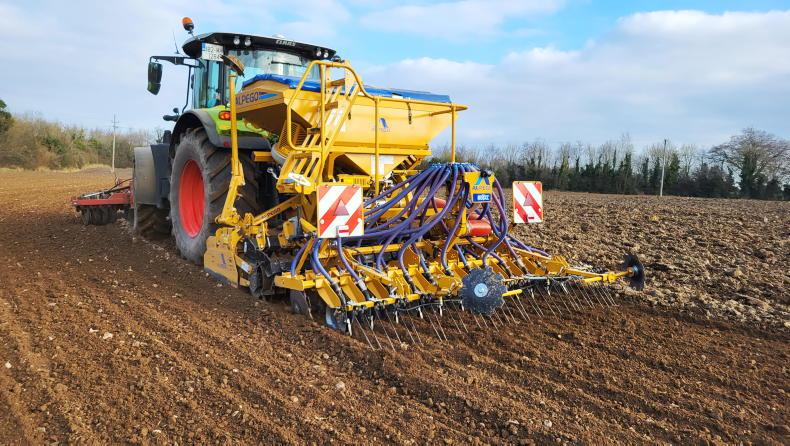

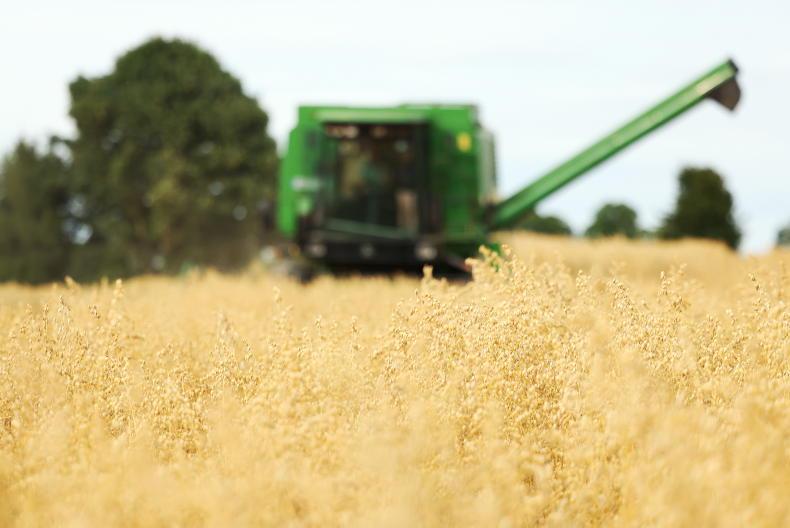

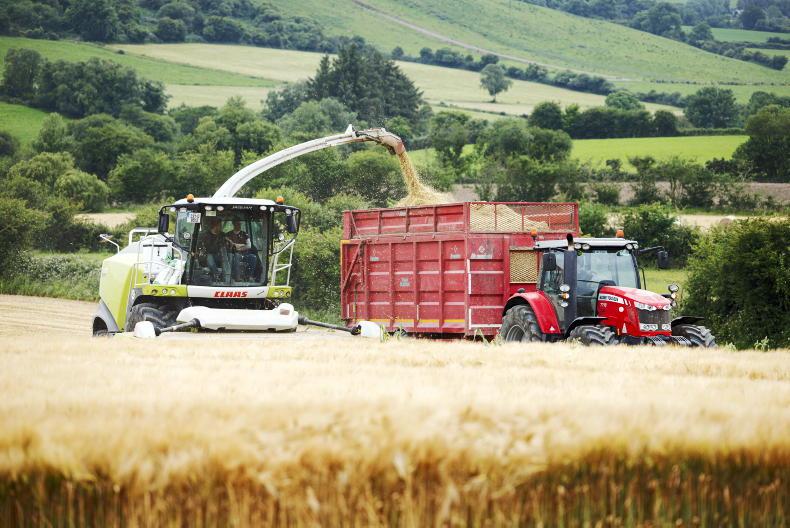
SHARING OPTIONS